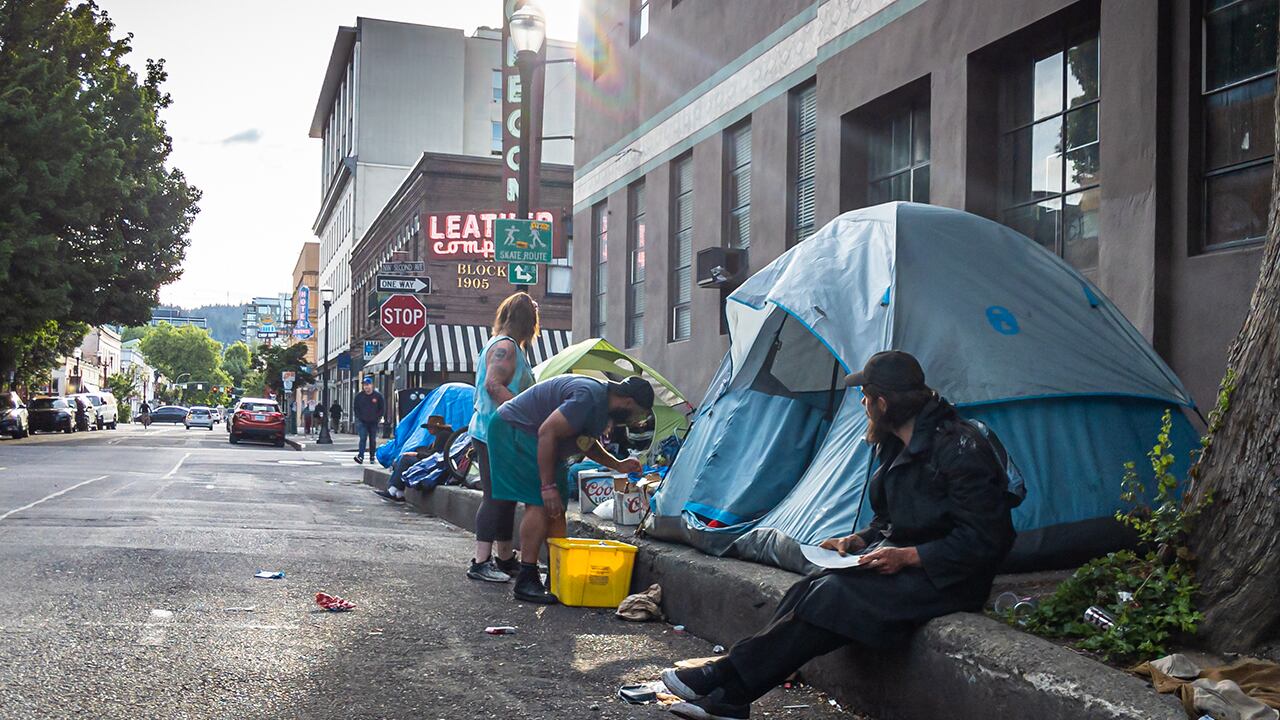In May, voters approved Metro's novel $250 million-a-year tax to tackle chronic homelessness by providing services—from addiction treatment to help with job hunting—to houseless people, along with putting a roof over their heads.
Since then, the region has descended deeper into the COVID-19 pandemic. Multnomah County Chair Deborah Kafoury, one of the measure's biggest backers, notes that the pandemic appears to have worsened homelessness.
"You only need to go outside to see there's a crisis," Kafoury says.
On Dec. 17, Kafoury and the Board of County Commissioners will vote on a plan to put the tax money to work. We checked in with her and other key stakeholders to see how plans to get the money on the street are progressing.
When is the money going to hit the streets?
Not until July 1, 2021.
Local governments, including the city of Portland and Multnomah County, sometimes borrow against anticipated tax receipts. Given the crisis on the streets, some people would like to see that.
Kafoury recognizes the urgency of the situation, but she says borrowing would not be prudent. She wants the Joint Office of Homeless Services to have time to ensure the money is spent as effectively as possible. "We've had to do really extensive community outreach," Kafoury says. "We've been asking, how should the money be spent and what should be the priorities? That has taken a while."
Kafoury and Marc Jolin, director of the joint office, say service providers are stretched to their limits already and that not everything they've done in the past has worked, so the solution isn't as simple as just adding more money to the current response.
"There's going to be an expectation that we can solve homelessness in a year or two," Kafoury says. "It's taken us a long time to get here and is going to take us a long time to solve this challenge."
Another issue: Metro has told Multnomah County to expect only $52 million of its projected $100 million allocation next year. That's more conservative than state revenue forecasts, which show high-income earners and large companies that will pay the Metro tax are mostly thriving.
Metro spokesman Nick Christensen attributes the lower number to "some code changes and some possible delays in collections associated with the launch of a new tax."
Does everyone agree where the money should go?
Not exactly. For the past couple of months, what's called the "coordinating board" of A Home for Everyone, the larger board that directs the joint office, has hashed out four drafts of Multnomah County's local implementation plan.
The plan focuses heavily on addressing historic racial inequities in housing and talks about the need to build capacity in culturally specific nonprofits. That's always been a part of the spending plan, but it wasn't a central selling point to voters.
City Commissioner Dan Ryan, among others, has pushed to keep the focus on mental health and addiction services, which county data shows are the leading disabilities among chronically homeless Portlanders.
"There has been creative tension," Ryan says. "The first draft was weak in terms of supportive services—which is what voters voted for."
Kafoury and Jolin say the focus on racial equity is required by Metro—and an imperative because of the overrepresentation of people of color among the county's homeless population.
"Racism and homelessness are inextricably connected," Kafoury says. "The majority of our providers have been white organizations that are successful serving white people but not people of color."
How is Multnomah County doing compared with the other two Metro counties?
One of the eye-popping stats in Multnomah County's draft implementation plan is that although the county comprises 46% of the population in Metro's jurisdiction, it provided 90% of publicly funded homeless services in the region last year. In other words, Washington and Clackamas counties are shirking their responsibilities.
Both counties are moving more slowly than Multnomah—they've let Metro know they won't have implementation plans until spring.
Jolin says he believes the other counties are working in good faith and as fast as they can. "There is an explicit understanding of the regional nature of the crisis," he says, "and of the importance of all three counties contributing their proportionate share."

